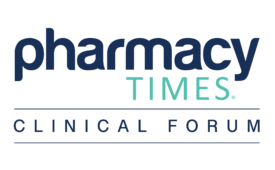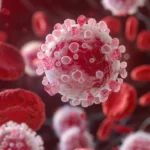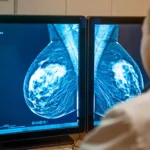
Despite the advancements made in the multiple myeloma space, patients—particularly those with relapsed or refractory disease—still have unmet needs, the moderators of 2 Pharmacy Times® Clinical Forum discussions noted.1,2 Moderator Gabriel Hinojosa, PharmD, BCOP, clinical pharmacy specialist in bone marrow transplant (BMT) and cellular therapy at University of Texas (UT) Southwestern Medical Center in Dallas, explained that the median overall survival (OS) for this population is less than 1 year (11.6 months), emphasizing a continued need for the development of novel therapies, different approaches, and additional clinical data.1 Additionally, Hinojosa noted that for pharmacists, they may be able to more effectively address the needs of their patients and better individualize treatment when they more clearly understand their role in multiple myeloma care in relation to other health care professionals (HCPs) on the care team.
In recent years, bispecific antibodies (bsAbs) have helped address some of the unmet needs of patients, particularly for those whose disease may be too advanced for them to wait for cell production or those who are considered unfit for chimeric antigen receptor (CAR) T-cell therapies.1 Currently, there are 3 available bsAbs, including teclistamab (Tecvayli; Johnson & Johnson) and elranatamab (Elrexfio; Pfizer), which are both B-cell maturation antigen (BCMA)–targeted therapies, and talquetamab (Talvey; Johnson & Johnson), a GPRC5D–targeted agent. These bsAbs, according to the moderators, are approved for use when patients with multiple myeloma have triple-class refractory disease after receiving 4 lines of prior therapy,1,2 including an anti-CD38 monoclonal antibody, a proteasome inhibitor, and an immunomodulatory agent.2
In contrast, CAR T-cell therapy, such as ciltacabtagene autoleucel (cilta-cel; Carvykti; Johnson & Johnson) and idecabtagene vicleucel (ide-cel; Abecma; Celgene Corporation), has received approvals for as early as the second-line setting for multiple myeloma, according to moderator Brooke Adams, PharmD, BCOP, clinical pharmacy specialist in BMT and cellular therapy at Orlando Health Cancer Institute in Florida.1,2 However, although these therapies are available in earlier lines, Hinojosa noted that patients don’t always receive CAR T-cell therapy at the earliest available line and pharmacists can sometimes find themselves in a conundrum when choosing between CAR T-cell therapy and bsAbs in the fifth-line setting. The panelists explained that to help make this decision, they look at factors such as a patient’s location in relation to their health center, their insurance, whether they have a caregiver, and their ability to commit to extensive regimens.1,2
“[Because] Parkland [Hospital in Dallas, Texas], is a county hospital, we don’t do transplants and we don’t do CAR T. If we do want to do any of those for our [insured] patients, we’ll send them to [a hospital that offers transplants, but] for [uninsured patients], they’re stuck,” Monica Chintapenta, PharmD, BCOP, hematology/oncology clinical pharmacist specialist at Parkland Hospital, explained. “Unfortunately for us, because we don’t have those options for all our patients, bsAbs will remain in that later-line setting unless they start to move up front and we have a better response. At that point, it also becomes a question of what’s next [because] our patients can’t [afford to have those] treatments done.”1
As far as trends related to bsAbs, Saba Kareem, PharmD, BCOP, clinical pharmacy supervisor of malignant hematology at Moffitt Cancer Center in Tampa, Florida, explained that decisions can often depend on the preferences of the specific HCP. For example, Kareem noted that she has seen teclistamab used earlier or as a preferred agent because of an HCP’s comfort with the drug.1 Adams acknowledged that this is likely because of the bsAb’s efficacy data, which show that at a median follow-up of 30.4 months, approximately 60% of patients had responded and approximately half of those patients had achieved a complete response. Patients were also shown to have a duration of response of approximately 2 years, progression-free survival of approximately 1 year, and a median OS of 2 years. Additionally, Hanna Bailey, PharmD, BCOP, clinical pharmacy supervisor of BMT and cellular immunotherapy at Moffitt Cancer Center, noted that both patients and pharmacists preferred the consistent dosing option available with teclistamab compared with elranatamab’s complicated dosing schedule.2
Danielle Baccarini, PharmD, pharmacist at Texas Oncology Downtown Fort Worth Cancer Center, noted that at her health center, bsAbs were hitting the market at a time when patients had exhausted all other options. She said that bispecific therapies are helping serve as a bridge to CAR T-cell treatments, because although there aren’t GPRC5D-targeting CAR T-cell therapies on the market, this treatment can be addressed with the use of bsAbs.
Candace Hooper, PharmD, BCOP, BCPS, oncology clinical pharmacist of malignancies and BMT at Baylor University Medical Center in Dallas, Texas, added that she has observed that when patients are diagnosed later in their disease state, responses to bsAbs may not be positive. For this reason, diagnosing patients earlier so that they can respond to bsAbs at the fifth line is important.1
Hinojosa said that another bsAb to keep an eye on is linvoseltamab (REGN5458; Regeneron Pharmaceuticals). Unlike the other 3 bsAbs, linvoseltamab is a BCMAxCD3 T-cell engager (TCE).1
“[We] should [see linvoseltamab] getting approved pretty soon,” Hinojosa said. “Then we will see a new kind of novel target, and we’ll split away from our BCMA or GPRC5D, and you’ll have [cevostamab, a FcRH5xCD3 TCE]. That’ll be interesting to see as those data mature…. The big thing is going to be timing and [making sure] we get access to the drug sooner rather than later.”1
When treating patients with multiple myeloma with bsAbs, the panelists expressed that the pharmacist’s role varies among health centers. Pearl Abraham, PharmD, BCPS, BCOP, clinical pharmacy specialist at UT Southwestern, said that at her center, pharmacists tend to be primarily responsible for recording information in electronic health records (EHRs). She explained that at times, there are 3 or more pharmacists who take care of a patient, dispense treatments, and routinely check in with them.1
In addition, some panelists noted that they must be mindful of the roles of other HCPs with whom they collaborate. For example, Bailey noted that although she and other pharmacists may want to treat patients for adverse events, other HCPs, such as nursing staff, may need to be involved in these decisions. Additionally, Bailey explained that for this reason, she will need to collaborate with nurses when recording or relaying information in patients’ EHRs.2
Sarah Rockwell, PharmD, BCOP, clinical oncology pharmacist of cellular therapy and malignant hematology at Moffitt Cancer Center, explained that her center has limitations in their EHR. She explained that they do not have pharmacists who verify orders, which was an important role that she had in prior centers such as Moffitt Cancer Center. Instead, the nurses are responsible for that documentation; however, Rockwell noted that modifications are being made to make the structure more cohesive in practice.2
Similarly, Baccarini expressed her wish for more cohesive, consistent educational resources across the board. From her experience, different HCPs in her center are receiving different informational resources, which has the potential to lead to miscommunication among staff.1
“[Communication can be] very segmented, and it could be more cohesive. For instance, at our institution, the specialists are in charge of educating the infusion nurses and the infusion pharmacy staff. I believe the physicians…probably have other educational resources, but those aren’t shared with the pharmacy staff or the infusion staff, and each of us is getting information from different places,” Baccarini said. “I wish it was more streamlined, where all education for all members of the health care team came from 1 source. That way, the information is uniform and it’s applicable to the center.”1
REFERENCES





